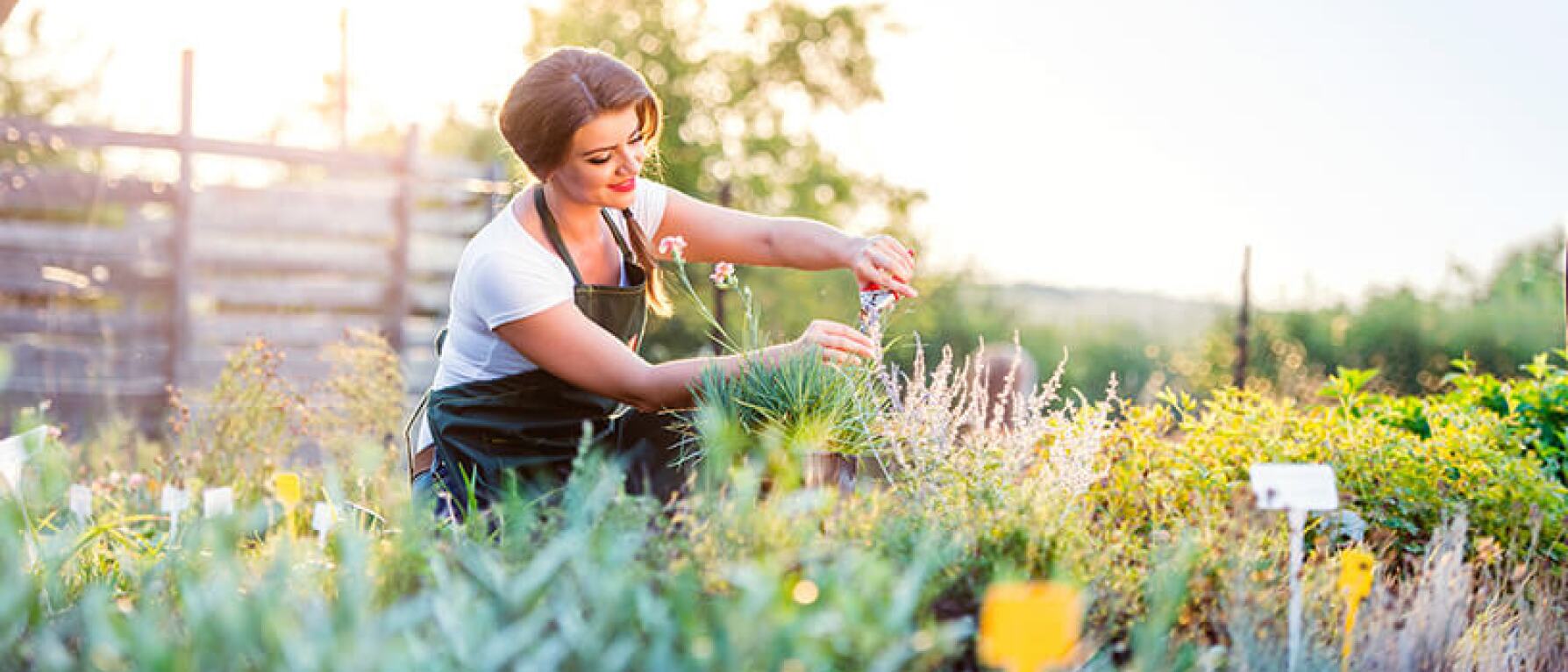Summer is in full swing, and that means you’ll experience high temperatures just about anywhere you go. While summer is a great time for being active outdoors, the natural occurrence of increased heat and light have the effect of raising the Pitta quality in your life. There are many benefits to this (drive, activity, spontaneity), but for those who are sensitive to increases in Pitta, summer can be problematic.
If you have a need for balancing this season’s fiery qualities, try some simple and easy gardening to cool yourself down. By cultivating your own “cool” through gardening, you will not only add healthy organic food to your dinner table, but also provide a means for beating the heat this summer.
Contrary to what you might think, it’s not too late to plant a garden (depending on your climate), so plan accordingly and implement some self-care between now and the end of summer. Here are some common plants to bring into your home and garden this year.
As you embark on your “cooling” adventure, keep these gardening tips in mind. Also, remember to tend to your garden in the early morning or around dusk to avoid the hottest times of the day.
Discover how to use the healing wisdom of nature to keep your unique mind-body type balanced all year long with our introductory online course, Discovering Ayurveda. Learn More.
If you have a need for balancing this season’s fiery qualities, try some simple and easy gardening to cool yourself down. By cultivating your own “cool” through gardening, you will not only add healthy organic food to your dinner table, but also provide a means for beating the heat this summer.
Contrary to what you might think, it’s not too late to plant a garden (depending on your climate), so plan accordingly and implement some self-care between now and the end of summer. Here are some common plants to bring into your home and garden this year.
Fruit: Melons
For many, consuming watermelon is a summer staple. Eating a nice cool watermelon on a hot summer day doesn’t need any Ayurvedic understanding; it’s simply enjoyable and a part of summer tradition. There are a variety of melons that can be good for balancing Pitta, most of which are fairly easy to manage. However, few people are adventurous enough to plant and cultivate their own. Melons can be hard to grow in some U.S. zones, but there are a few tricks of the trade:- If planting from seed, do so in late spring, early summer. Some melons will fruit late in the season, so don’t be discouraged if you haven’t planted them yet. Do some research and find out how different plants perform in your growing zone. For ease and convenience, you can also cultivate a plant that has already sprouted. “Baby” melon plants are usually available and easy to transplant later in the season.
- Make use of growing hills and proper rowing. This will give your growing melon plant the space and opportunity it needs. Many melons will “run” and take over any available space if they are not properly trained. A healthy cantaloupe plant, for example, can take control of entire sections of your garden. If space is limited, be alert. Trellises can be useful when dealing with melons that are not too heavy.
- Give melons plenty of sun and water. Most melons benefit from an abundance of water in early life and a little less as their fruit matures. These fruits can take more water than most, but you also don’t want to flood them. This is normally not a concern when sown in the ground, but for those who plan to grow melons in a pot or container, be mindful of this. Lots of sunshine is good for melons. Especially in early life, melons thrive on warmer soil temperatures. However, in areas of intense heat, you may want to see that your plant primarily gets morning sun or light shade to prevent it from overheating.
Herbs: Cilantro
Cilantro, cilantro, cilantro! There is a reason that many equatorial diets include this herb, and it is easy to see why. When growing your own cilantro, you may notice that it even “smells” cooling. This herb is very agreeable to indoor or outdoor conditions, and can be grown in small and large spaces. If you plan to grow cilantro outdoors, be mindful of its reaction to hot temperatures. It grows very fast and has a short life cycle in hotter climates. Follow these tips:- Plant cilantro in full sun in mild climates and light shade for hotter areas.
- Make use of your cilantro. Frequent picking will increase foliage and maintain the life span of your plant. Besides, it’s delicious with just about anything.
- Eat it fresh. Cilantro isn’t as good when dried.
- If planting multiple cilantro plants, allow a couple to seed in order to harvest the coriander and re-sowing. Coriander is the seed of a cilantro plant and also has great culinary value in its own right. Coriander naturally balances the Pitta dosha and can be used in a variety of dishes.
Vegetables: Spinach and Chard
If you want to balance Pitta with vegetables, then try planting crops with bitter tastes. Favor tender leaves like spinach and chard. The nutritional value and balancing capabilities of these two plants is exceptional. More popular garden staples like cucumbers and green beans are also good for balancing Pitta. Research what practices are best for your area, as spinach and chard may suffer in high-temp zones.As you embark on your “cooling” adventure, keep these gardening tips in mind. Also, remember to tend to your garden in the early morning or around dusk to avoid the hottest times of the day.
Discover how to use the healing wisdom of nature to keep your unique mind-body type balanced all year long with our introductory online course, Discovering Ayurveda. Learn More.

